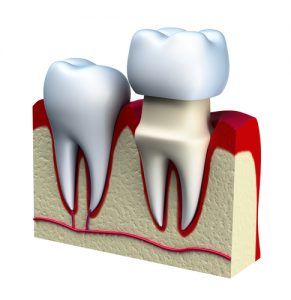 There are a number of different reasons and ways in which you can fracture or break a tooth. Regardless of how it occurred or what type of fracture your tooth has suffered, you will almost always need some sort of treatment to fix or seal the crack to prevent it from becoming a worse situation.
There are a number of different reasons and ways in which you can fracture or break a tooth. Regardless of how it occurred or what type of fracture your tooth has suffered, you will almost always need some sort of treatment to fix or seal the crack to prevent it from becoming a worse situation.
Not fixing a fractured tooth right away can result in further complications. For example, the crack can extend as more pressure is put on it while you chew on your food. This can eventually turn a fractured tooth that is simple to fix into a split tooth which is pretty much impossible to save, thus requiring a more complex procedure to maintain good oral health such as a dental implant procedure. Even if the fracture doesn’t become larger, further damage can happen to your tooth by damaging the inner pulp layer from all the pressure put on it while biting down. Damaging the pulp is a serious matter and can result in root canal treatment or tooth extraction.
Realizing some of the symptoms of a fractured tooth early on are essential in getting the simplest treatment possible. There are several treatment options available for tooth fractures and, depending on what type of tooth fracture you have will determine the appropriate treatment.
Treatment Options For Cracked Teeth
Depending on what type of fracture you suffered, and the extent of the damage, there are several treatment options available. The most common treatments for fractured teeth include:
- Cosmetic Contouring – also known as polishing, this is done if the cracked or chipped tooth is very minor
 and has not surpassed the enamel layer. The dentist essentially polishes the tooth to make it appear smooth again.
and has not surpassed the enamel layer. The dentist essentially polishes the tooth to make it appear smooth again. - Tooth Bonding – also used for minor tooth fractures, bonding makes use of some sort of filling material like a tooth colored resin to fill in the crack, restoring the strength and appearance of the tooth and preventing it from spreading any further.
- Dental Crown – for more serious cracks that go past the enamel layer, exposing the inner layers of the tooth, a dental crown would be required. This is a prosthetic tooth that is placed on top of the existing tooth to seal the fracture from infection and to restore the tooth’s natural appearance. If the cracked tooth allows for it, you may be able to place a veneer which requires less tooth reshaping and is similar in strength to a crown.
- Root Canal – in the case where the fracture is so severe that it effects the tooth pulp and causes an infection, a root canal treatment will be required. during this treatment, the tooth pulp is carefully extracted and filled with a bio-compatible material. It is then capped with a crown to restore appearance.
- Tooth Extraction – In very severe cases where either the tooth is completely broken, the crack extends upward from the root or the pulp is so infected that it causes an abscess, tooth extraction will be required. In this case, it would be best to fill the void in your mouth with a dental implant to prevent your jawbone structure from deteriorating.